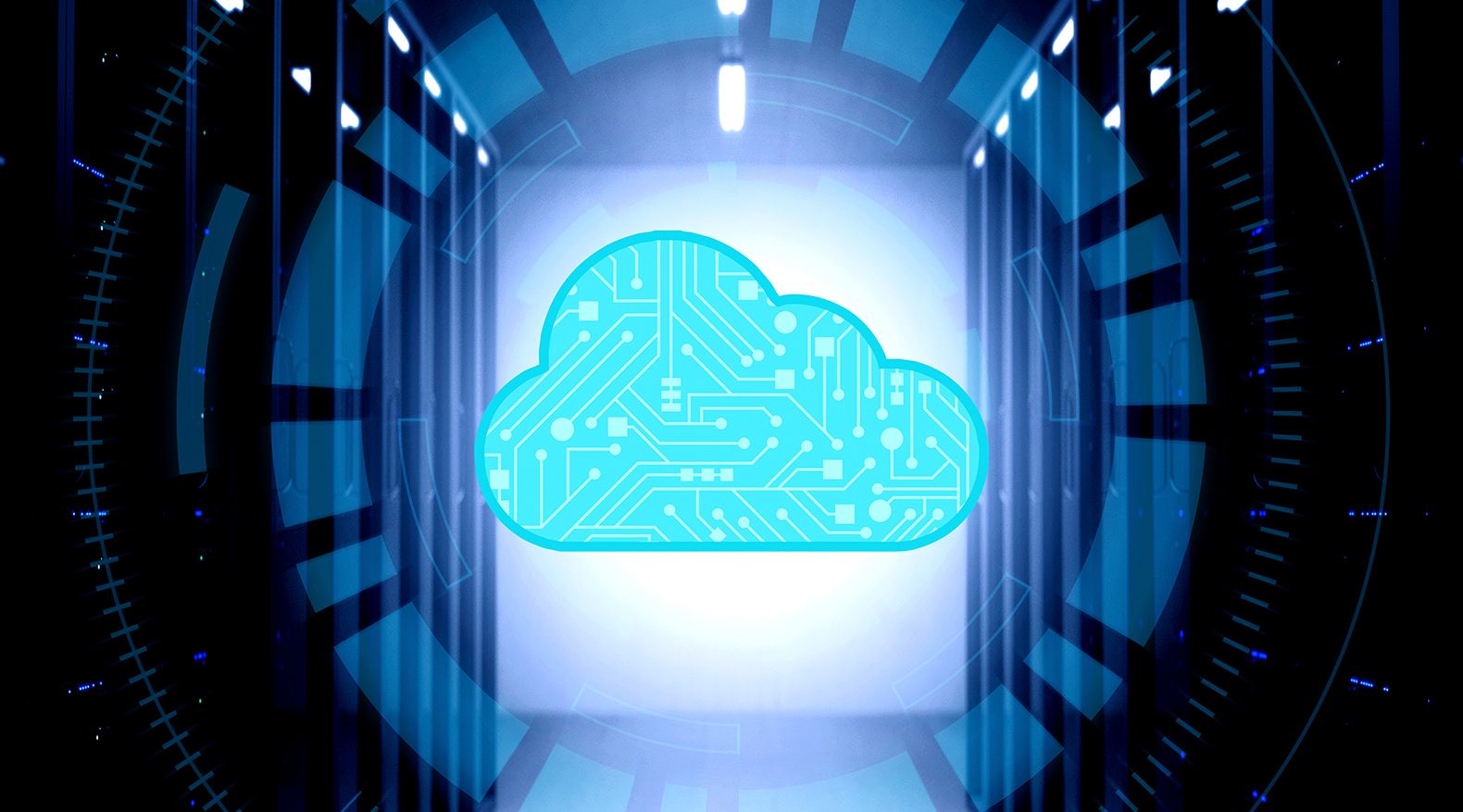Cyber Security vs. Cloud Computing

In today’s digital world, two of the most commonly discussed tech terms are cybersecurity and cloud computing. Often, they are thrown around in conversations about data breaches, remote work, and enterprise IT infrastructure. But what do these concepts actually mean, and how do they relate to one another?
This blog aims to understand the differences between cyber security vs. cloud computing, exploring their definitions, roles, and interconnections. We will also explore why it is crucial for both individuals and companies to comprehend their relationship in order to navigate the current technological environment.
What Is Cybersecurity?
To begin, let’s define cybersecurity. To put it simply, cybersecurity is the practice of protecting systems, networks, and data against threats from the internet. From hostile attacks like malware and phishing to illegal access and data breaches, it covers it all.
Furthermore, cybersecurity covers a broad range of protective measures:
Network Security – securing the internal network from intrusions.
Application Security – ensuring software and apps are free from vulnerabilities.
Information Security – protecting sensitive data from leaks or corruption.
Operational Security – managing user permissions and access rights.
Ultimately, cybersecurity aims to defend digital environments and prevent any form of compromise. While tools like firewalls, antivirus software, and encryption play a critical role, effective cybersecurity also involves policies, awareness training, and continuous monitoring.
What Is Cloud Computing?
In contrast, cloud computing refers to the online provision of computer services such servers, storage, databases, networking, software, and analytics. This concept enables consumers to access and utilize these services without having to maintain physical infrastructure.
However, there are three main types of cloud computing services:
IaaS (Infrastructure as a Service): Provides virtualized computing resources.
PaaS (Platform as a Service): Offers hardware and software tools for development.
SaaS (Software as a Service): Delivers software applications over the internet.
Cloud computing is extremely popular for its scalability, cost-efficiency, and accessibility. For instance, whether you’re streaming Netflix, backing up files to Google Drive, or running an enterprise ERP on Amazon Web Services (AWS), you’re leveraging cloud technology.
Cybersecurity vs. Cloud Computing: The Core Difference
At a glance, cyber security and cloud computing might seem unrelated. However, while they are distinct fields, they are increasingly intertwined in practice.
Here’s the key distinction:
Cybersecurity is about protection.
Cloud computing is about delivery and access.
Cybersecurity focuses on securing digital assets, whether they reside on a personal laptop or in a global data center. The goal of cloud computing, however, is to provide on-demand, internet access to computer resources.
That said, the rapid rise of cloud computing has made cybersecurity more complex. Cloud-specific security measures are essential as more and more enterprises shift their data and apps to the cloud.
Exploring Cloud Vulnerabilities
Transitioning to the cloud brings many benefits, but it also introduces unique risks. Understanding cloud vulnerabilities is essential for any organization relying on cloud services.
Some of the most common vulnerabilities include:
1. Misconfigured Cloud Settings
Numerous cloud platforms provide adaptable setup choices. Misconfigurations, however, may result in significant data exposure. For instance, a public Amazon S3 bucket might unintentionally expose sensitive files to anyone on the internet.
2. Insecure APIs
Cloud services use APIs for communication and integration. Attackers may use these APIs as access points if they are not adequately guarded.
3. Account Hijacking
Since cloud services are accessed remotely, stolen credentials can allow hackers to take over cloud accounts and services.
4. Data Breaches
The centralized nature of cloud storage can make it a lucrative target for cybercriminals. A single breach can expose massive volumes of customer data.
5. Lack of Visibility
Many businesses use multiple cloud services (a model known as multi-cloud). Maintaining visibility and control over the location and security of data might be challenging with this configuration.
Each of these vulnerabilities requires strategic, ongoing attention. Without adequate cloud threat protection, even the most robust cloud architecture can be exploited.
Data Security in the Cloud
One of the top concerns for businesses moving to the cloud is data security. After all, storing data off-site on someone else's servers naturally raises questions about security and other associated issues.
So, how is data secured in the cloud?
1. Encryption
Encrypting data while it's in transit and at rest is recommended. Additionally, most cloud services have encryption solutions built in, customers are still responsible for making sure they are implemented correctly.
2. Access Control
A key component of cloud security is restricting who has access to particular data. That is why additional defenses include multi-factor authentication (MFA) and role-based access control (RBAC).
3. Backup and Recovery
Furthermore, robust backup and disaster recovery protocols ensure that data is not permanently lost due to human error, hardware failures, or cyberattacks.
4. Compliance Standards
Regulations such as GDPR, HIPAA, and ISO 27001 enforce strict data handling standards. Moreover, cloud providers often offer compliance features to help organizations meet these obligations.
Importantly, cloud security is a shared responsibility. Additionally, providers manage the security of the cloud infrastructure, while clients are responsible for securing their data and access controls.
The Interdependence of Cybersecurity and Cloud
The distinction between cloud and cybersecurity is becoming more hazy as businesses continue to move the workload to the cloud. That is why, rather than viewing them as separate disciplines, it's helpful to understand how they complement each other.
1. Security Built Into Cloud Services
Most modern cloud providers incorporate strong cybersecurity features into their offerings. For example, AWS includes identity management, network firewalls, and continuous threat monitoring.
2. Cybersecurity Strategies Must Include Cloud Environments
Traditional security tools focused on on-premise setups are no longer sufficient. That is why cybersecurity teams must now adapt their tools and strategies to protect cloud-native applications and services.
3. DevSecOps Culture
The rise of DevSecOps—short for development, security, and operations—reflects the integration of cybersecurity principles directly into cloud-based development processes.
4. Continuous Monitoring and Incident Response
Additionally, because cloud environments are dynamic and scalable, continuous monitoring is essential. Moreover, many security platforms offer cloud-native monitoring tools that detect anomalies in real-time.
Cloud Threat Protection: A Strategic Imperative
Now more than ever, cloud threat protection must be at the forefront of enterprise security planning. However, the speed and scale of cloud environments demand proactive, agile defense mechanisms.
Some strategic approaches include:
Zero Trust Architecture: According to this approach, by default, no user or device can be trusted. Regardless of location, each access request is validated.
Security Information and Event Management (SIEM): These tools collect security information from many cloud platforms and produce useful insights.
AI and Machine Learning: Furthermore, smart algorithms can detect suspicious patterns and adapt defenses faster than traditional systems.
Cloud Access Security Brokers (CASBs): They serve as gatekeepers, imposing visibility and security regulations between cloud service providers and users.
All in all, investing in cloud threat protection not only safeguards data but also builds trust with clients, partners, and stakeholders.
Practical Use Cases: Where the Two Intersect
To better understand the real-world application of these concepts, let’s explore a few scenarios where cybersecurity and cloud computing overlap:
Remote Work Environments
The shift toward remote and hybrid work models—accelerated by global events like the COVID-19 pandemic—has made cloud computing indispensable. As a result, employees now rely on cloud platforms like Microsoft 365, Google Workspace, Zoom, and Dropbox to collaborate and stay productive from anywhere.
However, with this convenience comes increased risk. Employees accessing sensitive data from home networks or personal devices can introduce vulnerabilities.
Cybersecurity plays a critical role in:
Enforcing multi-factor authentication (MFA) to prevent unauthorized access.
Implementing Virtual Private Networks (VPNs) to encrypt internet traffic.
Using endpoint detection and response (EDR) systems to monitor and protect devices.
Conducting regular security awareness training to prevent phishing attacks.
Overall, these security strategies help organizations safeguard their cloud-based collaboration tools and maintain secure access across distributed teams.
E-Commerce and Online Retail Platforms
Additionally, online retailers and e-commerce businesses rely heavily on cloud computing to scale operations, handle fluctuating web traffic, manage customer databases, and streamline logistics.
For instance, a company might use a cloud service like AWS to host its website and run backend operations. Because of this, these platforms handle a lot of private client data, including transaction history, credit card numbers, and personal addresses.
That’s where cybersecurity comes in:
Implementing end-to-end encryption for secure payments.
Ensuring compliance with standards like PCI DSS (Payment Card Industry Data Security Standard).
Using Web Application Firewalls (WAFs) to prevent injection attacks or cross-site scripting.
Monitoring logs and user behavior to detect potential fraud or breaches.
That is why, in this scenario, cloud computing enables seamless commerce, while cybersecurity ensures trust and data protection, both of which are essential for customer retention and brand reputation.
DevOps and Application Development
Modern application development, especially in agile or DevOps environments, heavily relies on cloud platforms for scalability and speed. Additionally, developers use services like AWS Lambda, Azure DevOps, and GitHub Actions to automate code deployment and CI/CD pipelines.
However, this fast-paced ecosystem is susceptible to mistakes and misconfigurations.
Cybersecurity enhances cloud-based DevOps by:
Embedding security controls directly into the development lifecycle (DevSecOps).
Scanning for vulnerabilities in code repositories and container images.
Managing secrets and access keys securely using vaults and key management systems.
Ensuring secure software delivery through code signing and integrity checks.
That is why by integrating security into cloud-native workflows, teams can build and deploy secure applications without slowing innovation.
Final Thoughts
In summary, the debate of cybersecurity vs. cloud computing isn’t about which is more important—rather, it’s about understanding their interconnected roles. For instance, cloud computing powers the digital experiences we rely on, while cybersecurity ensures those experiences remain safe, private, and trustworthy.
However, as technology evolves, so too must our approach to digital security. Organizations must embrace both cloud innovation and cybersecurity best practices to thrive in a fast-paced, threat-laden environment. Therefore, by weaving security into the fabric of cloud infrastructure, we can build resilient systems that stand strong against modern-day threats.
So, if you are a business leading tech verticals, explore our cybersecurity and cloud solutions to lead the digital future with confidence.
